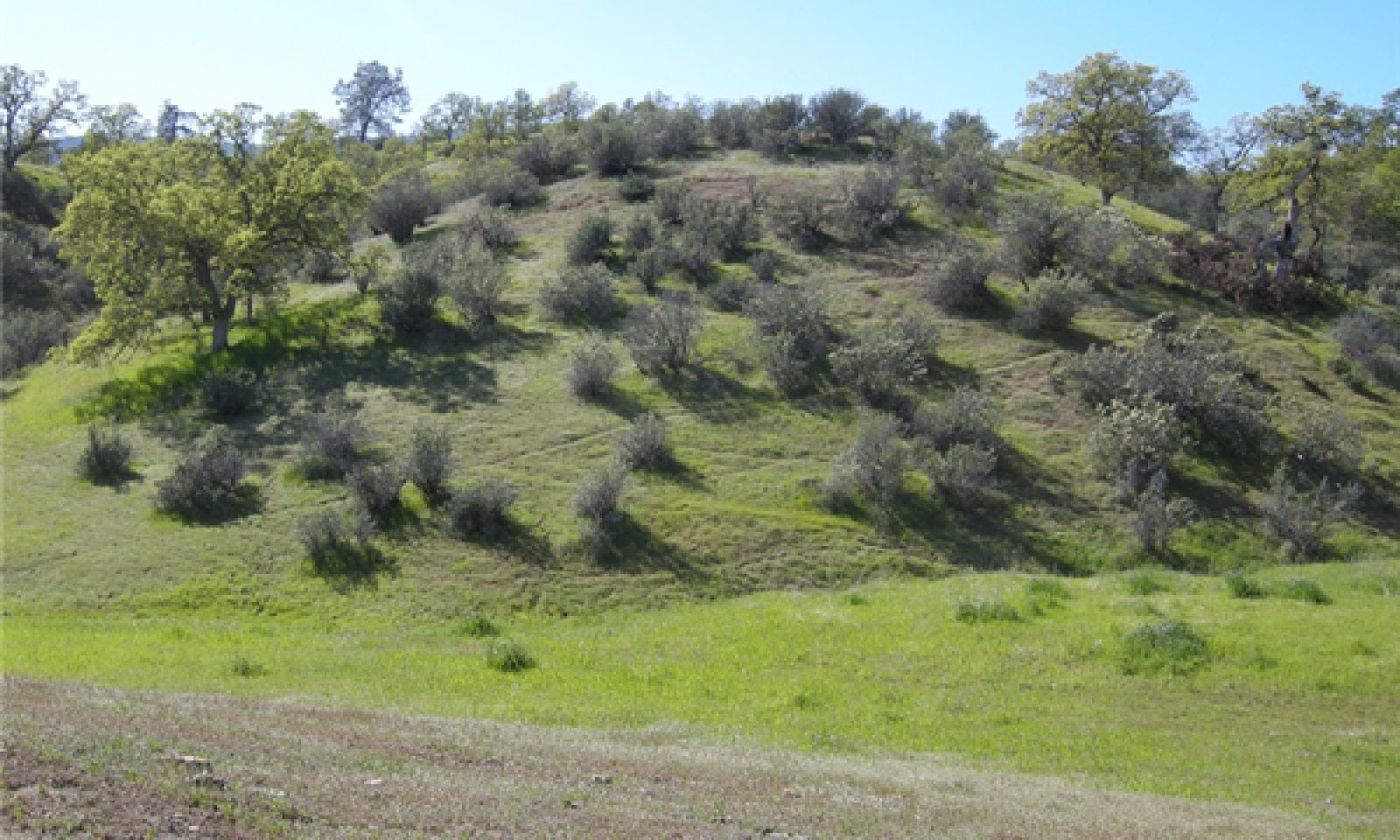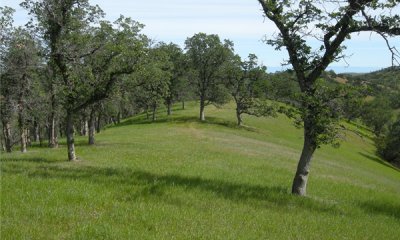
Shallow Loamy Foothills
Scenario model
Current ecosystem state
Select a state
Management practices/drivers
Select a transition or restoration pathway
- Transition T1A More details
- Transition T1B More details
- Transition 2A More details
- Transition 3A More details
-
No transition or restoration pathway between the selected states has been described
Target ecosystem state
Select a state
State 1
Reference State





Description
State 1 is the Reference State that represents the natural range of variability for this ecological site. Periodic drought, grazing and fire exclusion are the most dominant disturbances influencing this site.
States and Community Phases included in this document include those previously recognized by Fire Resource Assessment Program (State of California, FRAP, 1998) and other entities, as a result of the use of ordination software and professional consensus (Allen-Diaz et al., 1989; Vayssieres and Plant, 1998; and George et al., 1993).
The reference state for this ecological site has three community phases; landscape position, slope and aspect influence the vegetation dynamic between the phases. Each Community Phase has a blue oak overstory, however, the drier south and southwest-facing backslopes and ridgetops (Community phase 1.1) are primarily composed of a grass and forb understory, and on the cooler north and east-facing shoulders and backslopes (Community Phases 1.2 and 1.3) shrub cover increases where moisture conditions are more favorable for regeneration and survival. Long fire-free periods have resulted in a shrub component that is often mature and even decadent, with low natural regeneration. While it has been demonstrated that buckbrush and whiteleaf manzanita can regenerate at low levels in the absence of fire (League, 2005; Abrahamson, 2014), long-term fire suppression or exclusion has led to eventual decadence and a decline in shrub abundance.
Oaks are efficient water users; they are adapted to very low moisture conditions by virtue of their small leaf size, the regulation of water loss through the leaf stomata and by tapping into water below fractured rock (Baldocchi et al., 2007). Both buckbrush and whiteleaf manzanita are also very drought tolerant (League, 2005; Abrahamson, 2014). Oaks and annual herbaceous production rely on the organic matter and nitrogen to retain more water on site and they enhance soil quality through nutrient cycling, organic matter deposition and reduced bulk density (Dahlgren et al., 2003).
Improved water storage under shrubs and trees makes for plant available water later in the growing season due to decreased evaporation and shading, maintaining water longer as opposed to just grasses alone (Gill and Burke, 1999). Increased shrub cover slows water runoff rates, improving water storage. Some deeply rooted trees and shrubs may also induce hydraulic lift, transporting water to the upper soil layers (Richards and Cadewell, 1987; Caldwell et al., 1998; Ishikawa and Bledsoe, 2000; Liste and White, 2008), supporting the development of neighboring plants. Nutrients are also concentrated around shrub bases from litter fall and from sediment capture via movement of soil particles. As development of the shrub community progresses, inter-shrub native and non-native herbaceous vegetation decreases, and less understory vegetation is remaining.
The duration of vegetation successional stages varies greatly, and lacks sufficient research to gain better estimates. It has been estimated by some that it may take at least 50 years (Mayer and Laudenslayer, 1988) for development. Blue oak growth is slow and variable. Most stands of blue oak range from 80 to 100 years of age (Kertis et al., 1993), however, there are remnant older blue oak specimens that may range to over 450 years of age (Stahle et al., 2013) in more remote or steep locations. Mature brush development can take 10 to 15 years.
This reference state is relatively stable unless tree removal occurs.
Submodel
Description
The annual dominated Grassland State is greatly influenced by the timing and amount of precipitation and the amount of residual dry matter (George et al., 2001a). Currently species composition and productivity of the annual-dominated grassland and understory grasses and forbs vary greatly within and between years.
Annuals use available water primarily in the top 1 foot of soil (George et al., 2001); their shallow root structures dry out quickly during rapid spring growth and evapotranspiration quickly depletes soil moisture. There is a higher nutrient loss from annual systems as opposed to shrub-dominated systems (Michaelides et al., 2012) and a higher percentage of “fines” transported offsite despite similar erosion rates, according to one study. Although nutrient leaching from grassland systems is variable, nutrients that are moved beyond the shallow root systems of the annual grasses are lost to leaching. Water infiltration may be more rapid in grasslands than in shrub-dominated landscapes.
Submodel
State 3
Shrub State



Description
Conversion, severe fire or poor oak regeneration and senescence of mature oaks are triggers that could lead to a shrub-dominated community. Shrub species such as buckbrush (Ceanothus cuneatus) and whiteleaf manzanita require moderate to severe fire to scarify the seed coat and produce abundant regeneration. Small patches of the shrub yerba santa (Eriodictyon californicum) may also be present.
As development of the shrub community progresses after fire, inter-shrub native and non-native herbaceous vegetation decreases, and less understory vegetation is remaining. Available water may be present later in the growing season due to decreased evaporation and shading, maintaining moisture longer than under just grasses alone (Gill and Burke, 1999). Some deeply rooted trees and shrubs may also induce hydraulic lift, transporting water to the upper soil layers (Richards and Cadewell, 1987; Caldwell et al., 1998, Ishikawa and Bledsoe, 2000; Liste and White, 2008), supporting the development of neighboring plants. Nutrients are also concentrated around shrub bases from litter fall and from sediment capture via movement of soil particles. As development of the shrub community progresses, inter-shrub native and non-native herbaceous vegetation decreases, and less understory vegetation is remaining.
Submodel
Mechanism
Transition 1A occurs following a trigger such as tree removal or clearing (Type Conversion), moderate or stand-replacing fire. Thinning oaks too heavily on this site can also have negative effects on the amount of natural regeneration, as natural regeneration seldom occurs further away than 100 feet from an existing tree canopy (FRAP, 1998). Additionally, stump sprouting in mature trees is not likely in a low rainfall area. If young seedlings and saplings are not recruited into the next age class as older trees die or before they are removed, oak populations may decline and areas converted to grassland (State 2) (McCreary, 2001). Natural regeneration of oaks is low on this dry site.
Research indicates that oak removal results in a decline in soil quality, including a loss in soil organic matter and nitrogen (Dalgren et al., 2003). Potential feedbacks from tree removal are the loss of organic matter, increased erosion and higher soil bulk density (Dalgren, et al., 2003).
Mechanism
Loss of blue oak through conversion, moderate to severe fire or poor oak regeneration and senescence of mature oaks could lead to a buckbrush shrub and grass dominated community (State 3). Buckbrush is a nitrogen fixing shrub, giving it a competitive advantage over grasses and forbs (League, 2005). In grazed areas, shrub interspaces have increased potential for erosion. Native and non-native herbaceous vegetation is decreased, and less understory grass and forbs are remaining.
Mechanism
Buckbrush primarily regenerates following fire when temperatures crack the hard seed coating (Stuart and Sawyer, 2001) although it may occasionally become established in shrub openings without fire via mechanical disturbance (League, 2005). If there is stored seed in the soil, fire could stimulate buckbrush seed to germinate.
Mechanism
Transition to an Annual Grassland State is triggered when frequent fire return intervals kill new shrub seedlings and eventually deplete the seed bank (League, 2005). In one study (Keeley, 1975) a second burn of young buckbrush caused an occurrence called “shock stagnation”, where buckbrush was completely eliminated, allowing grasses and forbs to dominate. Grazing following fire reduces new seedling vigor and may lower or eliminate seed production prior to the next fire (League, 2005). Brush treatments such as cutting or removal in combination with grazing may also result in buckbrush elimination.
Model keys
Briefcase
Add ecological sites and Major Land Resource Areas to your briefcase by clicking on the briefcase (![]() ) icon wherever it occurs. Drag and drop items to reorder. Cookies are used to store briefcase items between browsing sessions. Because of this, the number of items that can be added to your briefcase is limited, and briefcase items added on one device and browser cannot be accessed from another device or browser. Users who do not wish to place cookies on their devices should not use the briefcase tool. Briefcase cookies serve no other purpose than described here and are deleted whenever browsing history is cleared.
) icon wherever it occurs. Drag and drop items to reorder. Cookies are used to store briefcase items between browsing sessions. Because of this, the number of items that can be added to your briefcase is limited, and briefcase items added on one device and browser cannot be accessed from another device or browser. Users who do not wish to place cookies on their devices should not use the briefcase tool. Briefcase cookies serve no other purpose than described here and are deleted whenever browsing history is cleared.
Ecological sites
Major Land Resource Areas
The Ecosystem Dynamics Interpretive Tool is an information system framework developed by the USDA-ARS Jornada Experimental Range, USDA Natural Resources Conservation Service, and New Mexico State University.



